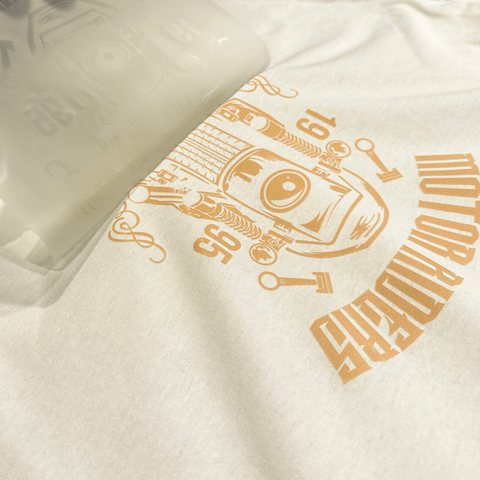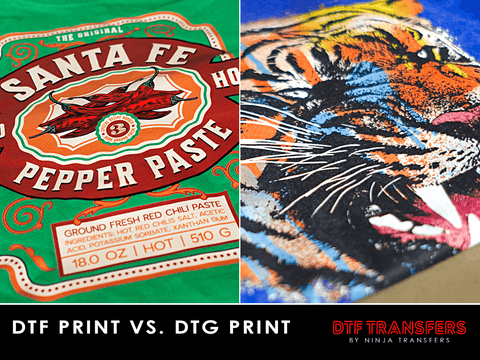The printing world can be overwhelming with so many different techniques and technologies to consider to get the perfect print on your apparel. With DTF transfers entering the market as the latest innovation, understanding the difference between this technique and the traditional DTG method can help you to make the right choice for your business, hobby or individual use.
What Is DTG?
DTG stands for direct to garment. With this technique, inks are applied directly to the surface of the garment with a specialist DTG printer.
What Is DTF?
DTF stands for direct to film, and refers to the process of transferring prints from films directly onto the garment, material or fabric of your choice. Learn more about what DTF transfers are.

The Comparison
To help you get a clear understanding of DTF vs DTG, we’ve put together a comparison table to help show you the main differences between the two techniques.
|
DTF |
DTG |
|
|
Average no. of washes |
60+ |
6-10 |
|
Material |
Any |
100% cotton only |
|
Printing Speed |
15 seconds |
1-2 minutes |
|
Color Vibrance |
Long-lasting & high saturation |
Fade quickly |
|
Versatility |
Highly versatile |
Limited |
|
Pre-Treating Required |
No |
Yes |
Average Number Of Washes & Color Vibrance
One of the biggest advantages of DTF is its durability. Similar to screenprinting, DTF prints have a lengthy lifespan and can remain vibrant after more than 60 washes. DTG on the other hand is renowned for its fading after just 6-10 washes. The vibrance of DTF printing is also a stand-out feature and as is its ability to print white.
Material & Versatility
DTF is an incredibly versatile technique and can be used on any material. DTG on the other hand is restricted to just 100% cotton - you can attempt to use other materials with DTG but the quality of the print will be poor. DTF also offers more versatility in printing locations than DTG.
Printing Speed
DTF is fast and efficient, meaning if you’re printing transfers at home, you are able to print to order as opposed to having a pre-printed inventory. You are able to print a DTF transfer to apparel within just 15 seconds (although a second press of an additional 15 seconds is recommended to remove shine and improve durability). DTG takes between one to two minutes per print.
Process
With DTG, there are additional steps such as pre-treating and drying times which make the process somewhat time consuming. With DTF, there’s just a 4 step process which you can find more about with our DTF pressing instructions.
Which Is Better?
Choosing between DTF and DTG will depend on your preferences and requirements. However, innovative DTF transfers are bringing more vibrant colors, versatility and durability to the printing world. This next revolution in printing technique is set to become the most popular, helping you bring your most creative ideas to life.
DTG vs DTF FAQs
Does DTF last longer than DTG?
Yes, DTF is highly durable compared to DTG, with the ability to last more than 60 washes similar to the durability to other methods like screen printing. DTG on the other hand, can begin to fade within just 6-10 washes.
Is DTF more expensive than DTG?
DTF is actually a cheaper alternative than DTG - the supplies and accessories are more affordable as well as the printer. DTF is generally a cheaper option for smaller print runs when compared to most techniques.
Can I print on more materials with DTF than DTG?
Yes, you can print on any material you please with DTF, which is what makes it such a versatile technique. Not only can you print on it, but it will remain vibrant and durable on any material. With DTG you are restricted to printing on just 100% cotton.



